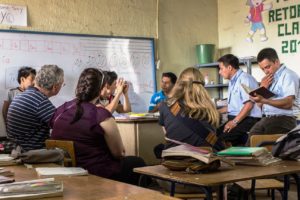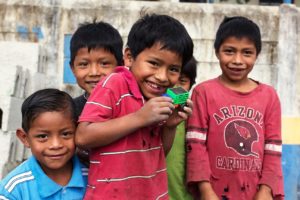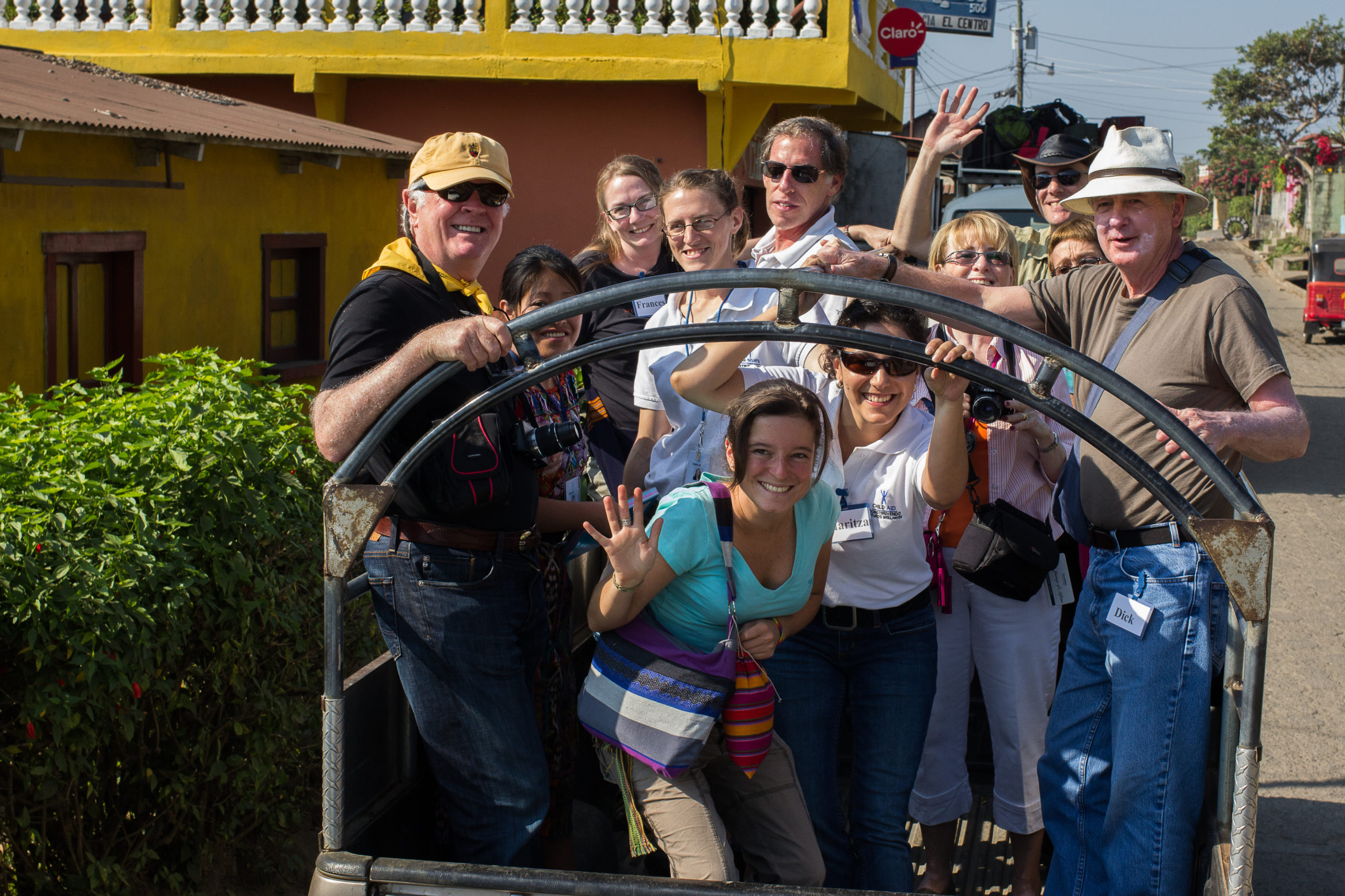By: John Kin, Child Aid Board Member
Judging by the looks of surprise we got along the way, it’s probably not every day that a couple of pickup trucks filled with Americans comes bumping along through the back roads of Guatemala.
I was traveling with a group of Child Aid board members and supporters to visit four K’iche-speaking communities in a coffee growing region south of Lake Atitlán. The trip was part of our annual board retreat and an opportunity for us to visit and interact with some of the students, teachers and community members who benefit from Child Aid’s programs. We also spent time with the staff who work on the front lines of our literacy program.
To get where we needed to go, we had to use trucks. A washed out road had forced us to take a rough, alternate route that was far too treacherous for our bus. The dusty and bumpy trip was the first of many eye-opening experiences, as we realized the logistical challenges of working in remote areas.
As a board member and long-time Child Aid supporter, I had visited some of these same communities on my last trip to Guatemala two years ago. After hearing about the growth and development of the Reading for Life program since my last visit, I was eager to see for myself how things had changed.

Our first stop was the small village of Pacanal. This school had just recently joined the program and had not yet received any books or teacher training from Child Aid. John Van Keppel, the Guatemala National Director, wanted us to see what typical rural classrooms are like before taking to those we’ve worked in for a year to more. “It was important to me that the group gets to see a school that hasn’t had any support,” John told me later, “because this is what the majority of schools in Guatemala are like.”
At Pacanal we met with a teacher who told us about his daily routine and showed us the handful of math and reading books he had for his many students. I was particularly struck by the stack of cards he had made out of paper to teach the sounds of letters. The teacher was obviously doing his best but had few resources to work with.
In visiting other schools we observed several teachers using materials they received and techniques they learned in Child Aid trainings. You could see a real difference in the confidence level of the teachers and their engagement and interaction with the students. A classroom in Las Canoas, with a teacher now in her third year of trainings, was filled with the joyful sound of students working together in small groups, eagerly drawing pictures, playing word games and reading a book aloud with their teacher.

Another exciting stop for me was the town of Xojolá, where we visited a bright new community library that Child Aid helped build last year. The first time I visited here, the library was operating out of a small converted building that barely had enough room to hold the books. The new space featured wide open spaces for kids to work, read and interact. The whole town gathered to show off the library to our group and honored us with a traditional Guatemalan meal prepared by the community and served at a long table in the middle of the library.
It was a pleasure for me to reconnect and spend time with the Guatemalan staff who work in the villages every day. It’s their dedication and enthusiasm that is at heart of the success of the programs.
“The staff was excited to meet the board members and share what they have learned and done,” said Child Aid’s Guatemala Operations Coordinator Maritza López. “They are proud of the work they are doing with Child Aid and feel they are doing something positive for Guatemala.”











